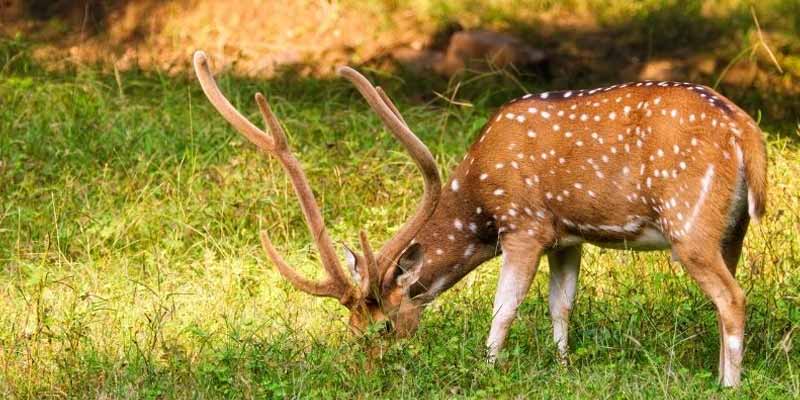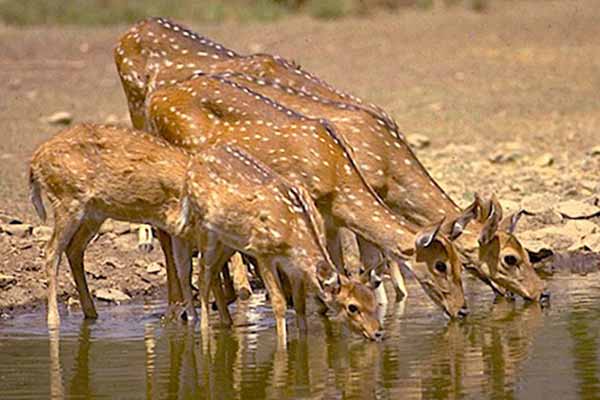Band Baretha Wildlife Sanctuary, situated near Bharatpur in the Indian state of Rajasthan, is a haven for wildlife enthusiasts and nature lovers alike. Spanning over 198 square kilometers, this sanctuary is a crucial habitat for a diverse range of flora and fauna.
The sanctuary is renowned for its avian diversity, boasting over 200 species of birds including migratory birds like the Siberian Crane, Sarus Crane, and several species of ducks. The wetlands within the sanctuary provide a conducive environment for these birds, making it a birdwatcher’s paradise.
Apart from birds, Band Baretha is also home to various mammalian species such as Nilgai, Chital, Wild Boar, Hyena, and Jackal. The sanctuary’s landscape comprises dry deciduous forests, grasslands, and water bodies, offering a rich tapestry of ecosystems to explore.
Visitors can indulge in activities like birdwatching, wildlife photography, nature walks, and jungle safaris to experience the sanctuary’s natural beauty up close. With its scenic landscapes and diverse wildlife, Band Baretha Wildlife Sanctuary stands as a testament to India’s rich biodiversity and is a must-visit destination for any nature enthusiast Wildlife in Rajasthan.

History of Band Baretha Wildlife Sanctuary
The Band Baretha Wildlife Sanctuary, situated near Bharatpur in the Indian state of Rajasthan, has a rich history intertwined with conservation efforts and ecological significance. Spanning approximately 198 square kilometers, this sanctuary was established in 1985 to protect the region’s diverse flora and fauna, particularly its avian population.
Historically, the area around Band Baretha has been a significant habitat for various species, including migratory birds. The sanctuary’s landscape comprises dry deciduous forests, grasslands, and water bodies, providing a conducive environment for a wide range of wildlife. Its most notable feature is the Band Baretha Lake, which serves as a crucial stopover for migratory birds during their annual journeys.
The sanctuary is renowned for its avian diversity, hosting numerous species of resident and migratory birds such as the Indian courser, black-necked stork, white-eyed buzzard, and various species of ducks. These birds attract birdwatchers and nature enthusiasts from around the world, contributing to the region’s eco-tourism.
Apart from its avifauna, Band Baretha is also home to diverse mammalian species including nilgai, jackal, jungle cat, and striped hyena. Reptiles like the Indian python and various species of lizards are also found within its boundaries Rajasthan wildlife Tour Packages.
Over the years, the sanctuary has played a crucial role in conservation efforts, including habitat preservation, wildlife monitoring, and community engagement. It has also been involved in research and educational activities aimed at raising awareness about biodiversity conservation and sustainable development.
Overall, the Band Baretha Wildlife Sanctuary stands as a testament to Rajasthan’s commitment to preserving its natural heritage and fostering coexistence between humans and wildlife.
Places to visit near Bandh Baretha Wildlife sanctuary
There are several notable places to visit near the Band Baretha Wildlife Sanctuary in Bharatpur, Rajasthan:
Keoladeo National Park: Also known as Bharatpur Bird Sanctuary, this UNESCO World Heritage Site is renowned for its diverse birdlife, especially migratory birds. It’s just about 40 kilometers away from Band Baretha.
Lohagarh Fort: Situated in Bharatpur, Lohagarh Fort is a historic marvel known for its robust structure and architectural brilliance. It’s about 50 kilometers from Band Baretha.
Deeg Palace: Located around 60 kilometers from Band Baretha, Deeg Palace is a stunning edifice known for its intricate architecture and beautiful gardens. It served as a summer resort for the rulers of Bharatpur.
Mathura and Vrindavan: These two ancient cities, known for their association with Lord Krishna, are approximately 100 kilometers away from Band Baretha. They boast numerous temples, including the famous Banke Bihari Temple and ISKCON Temple.
Fatehpur Sikri: A UNESCO World Heritage Site, Fatehpur Sikri is an architectural marvel located around 140 kilometers from Band Baretha. It was the capital of the Mughal Empire during the reign of Emperor Akbar and is famous for its well-preserved red sandstone structures.
Agra: Home to the iconic Taj Mahal, Agra is approximately 160 kilometers from Band Baretha. Apart from the Taj Mahal, visitors can explore Agra Fort, Fatehpur Sikri, and other historical monuments.
Saras Circle: Saras Circle is a popular picnic spot located around 50 kilometers from Band Baretha. It offers serene surroundings and a picturesque lake, perfect for a relaxing day out.
These attractions offer a mix of natural beauty, historical significance, and cultural richness, providing visitors with a diverse range of experiences near the Band Baretha Wildlife Sanctuary in Bharatpur.
Best Time To Visit Band Baretha Wildlife Sanctuary
The best time to visit Band Baretha Wildlife Sanctuary in Bharatpur, Rajasthan, largely depends on the interests of the visitor. However, the ideal time for wildlife enthusiasts and birdwatchers is during the winter months, from November to February. This period coincides with the migratory season for many bird species, resulting in a significant influx of avian visitors to the sanctuary.
During the winter months, the weather is pleasant and conducive to outdoor activities, with temperatures ranging from cool to mild, making it comfortable for exploration. Additionally, the presence of migratory birds adds to the allure of the sanctuary, offering excellent opportunities for birdwatching and wildlife photography.
For those interested in experiencing the sanctuary’s lush greenery and vibrant ecosystem, the monsoon season from July to September can be an attractive time to visit. The landscape comes alive with lush vegetation, and the water bodies are replenished, providing a refreshing backdrop for nature lovers.
However, it’s essential to note that the monsoon season may also bring heavy rainfall, which can impact accessibility and wildlife sightings. Therefore, visitors should exercise caution and check weather forecasts before planning a visit during this time.
Overall, the winter months of November to February are considered the best time to visit Band Baretha Wildlife Sanctuary for optimal wildlife viewing and a comfortable outdoor experience.
